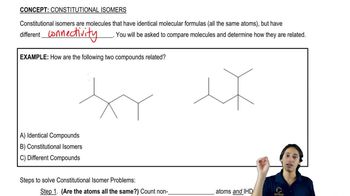For the compound 1-ethyl-3-isopropylcyclopentane
(c) What is the stereochemical relationship between trans isomers?
 Verified step by step guidance
Verified step by step guidance Verified video answer for a similar problem:
Verified video answer for a similar problem:



 3:51m
3:51mMaster Determining when molecules are different. with a bite sized video explanation from Johnny
Start learning